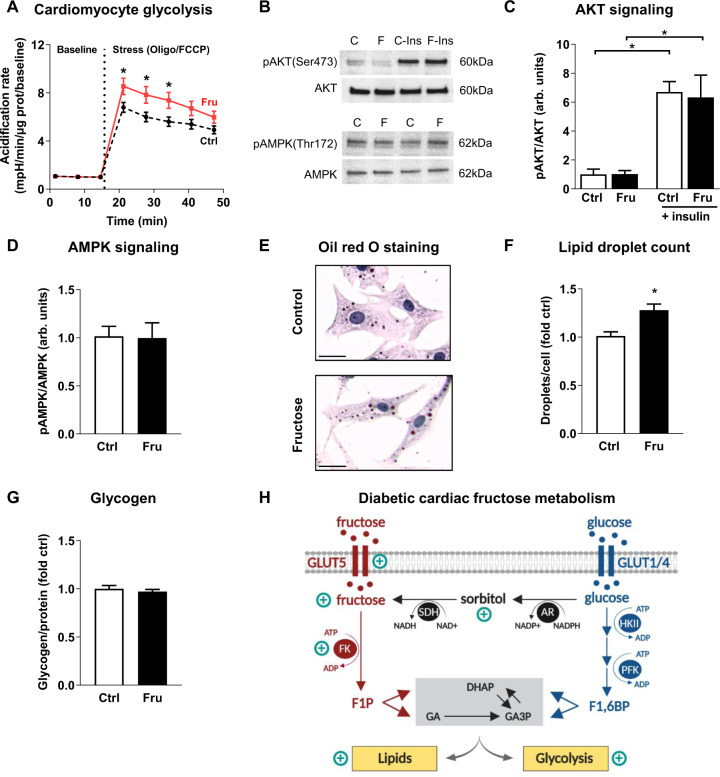Fig. 2. Effect of fructose on cardiomyocyte glycolysis, energy signaling, lipid droplets, and glycogen content in vitro.
Neonatal rat ventricular myocytes were cultured for 24 h with 1 mM fructose (Fru) vs. control (Ctrl, 1 mM mannitol). A Increased glycolytic capacity with fructose was evident during the stress test (extracellular acidification rate normalized to protein & baseline). Oligo, oligomycin; FCCP, carbonyl cyanide-p-trifluoromethoxyphenylhydrazone. n = 9 wells/group, 3 independent cultures. B Representative immunoblots for C, D (C, control; F, fructose; Ins, insulin). Images have been cropped for concise presentation. C Ratio of phosphorylated (Ser473) to total AKT was unchanged with fructose in baseline and insulin-stimulated conditions (1 µm insulin, 30 min). D Ratio of phosphorylated (Thr172) to total AMPK was unchanged with fructose. E Representative images of control and fructose cultured cardiomyocytes, oil red O-stained for assessment of lipids (high-intensity red lipid droplets show as near black in some instances, scale bar 20 µm). F Cardiomyocyte lipid droplet count normalized to cell number (estimated by nuclei count), is increased with fructose (n = 5–6 wells/group, 10–15 images per well, 2 independent cultures). G Glycogen content was similar in cardiomyocytes cultured in fructose and control media (n = 7–11 wells/group, 3 independent cultures). H Schematic representation of the cardiomyocyte consequences of high fructose levels in the diabetic heart. FK, fructokinase (also termed ketohexohinase); F1P, fructose-1-phosphate; DHAP, dihydroxyacetone phosphate; GA, glyceraldehyde; GA3P, glyceraldehyde-3-phosphate; HKII, hexokinase II; PFK, phosphofructokinase; F1,6BP, fructose-1,6-biphosphate; AR, aldose reductase; NADPH, reduced form of nicotinamide adenine dinucleotide phosphate (NADP + ); SDH, sorbitol dehydrogenase; NADH, reduced form of nicotinamide adenine dinucleotide (NAD). Schematic created with biorender.com. Repeated measures ANOVA with Bonferroni post-hoc tests (A), 2-way ANOVA with Bonferroni post-hoc tests (C), Mann Whitney U non-parametric test (F), Unpaired Students t-test (D, G), *p-value < 0.05, mean ± SEM.

